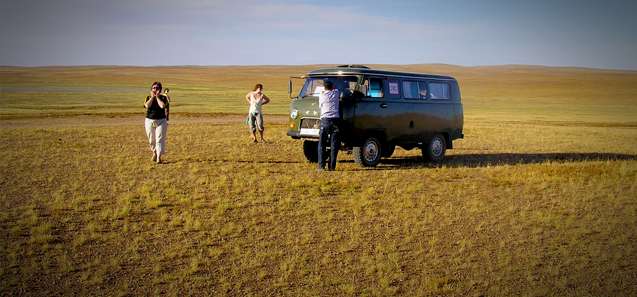
- Russian 4wd – Gobi Desert, Mongolia
Deviating from the usual updates on what we’re doing now, I thought I’d put together a series of blogs on how we plan and “execute” an adventure. Weve had nearly 8 years on the road (in 17) and have made a number of different choices on where we travel, who we travel with and what mode of transport we use. Our overriding theme is we like to experience things we can’t when we’re “in the groove of daily life”, although at times our daily life has been just that – travelling. And, whilst we like to take a risk, neither of us is about to willingly put ourselves or each other in a life threatening situation. However, if we avoided everything and every place that posed a danger according to many, we would’ve missed out on some of the most amazing experiences of our life. More on that later .
The process (and yes I do love a good process) basically goes like this:
1. Choose a Destination
2. Work Out how to get there and who you want to travel with.
4.Work out how the basics of transport, food and accommodation will work,
5.Make up a Pre-Departure Checklist and
6. Do it!!!!
Just be prepared to make changes at any point along the way. We like to have a plan BUT one-off opportunities, chance encounters and Murphy’s Law are all good reasons to be flexible when you’re on the road.
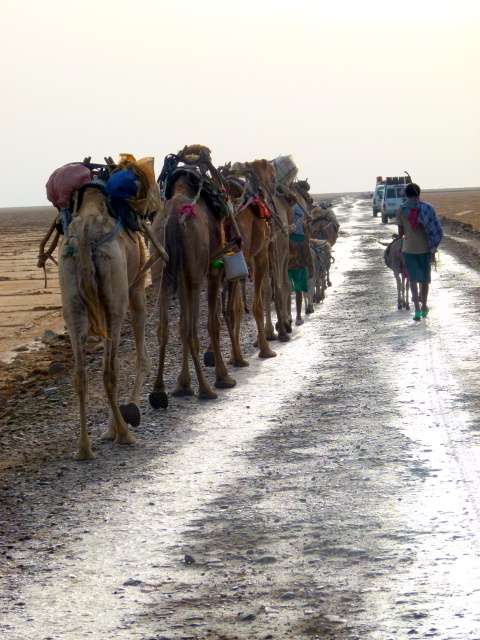
- Camel Train on the way to the Salt Lakes – Afar Region Ethiopia
1.Choosing a Destination…Hmmm..So many ways…
a. Throw a dart at a world map and see where it lands. Why not?…and you can always go best of three (or five, or seven…) if you don’t like the result. The digital version of this is to type “where should I go on holiday?” into Google and see what pops up. I just did that exact same thing, clicked on a Quiz that popped up and the results weren’t too bad according to our tastes and we have actually been to many of the suggested places. The only problem was, the recommended tours were mostly high end companies that we personally, would never entertain using. BUT we are not beyond stealing taking on board itineraries and following them independently using some of the tools I get to in the next two sections.
b. Visit a travel show…Hmmm. Whilst many of the products on offer are for well established tourist destinations with lots of infrastructure, off the beaten track destinations will normally be covered by one or more operators and you can at least get a feel for the “highlights” of an area. (And, ditto for itineraries.) And…the pictures in the brochures are lovely. Pin some you like around the house/work/car and give yourself something to dream of and work for.
c. Trawl a site like www.lonelyplanet.com. They will usually have a number of Top 10 lists – beaches, culture, trekking destinations that you can investigate. I just had a look then and their favourite destinations at the moment are Sri Lanka, Corsica and San Francisco, all places that are definitely on our list. Once I find an interesting country or region I normally download the Free Chapters on it from the LP shop and look at suggested itineraries and places of interest and keep digging from there. Once we’re decided on our destinations, we would normally buy the relevant Lonely Planet to assist in planning further details.
d. Read the travel pages in the Newspaper, magazines and watch travel shows on a regular basis and make a list of places to investigate. (We normally revert to the Lonely Planet site for the investigative process.)
e. Visit your local travel agent. Just be aware that they may want to talk you into a trip that pays them the most commission rather than the cheapest or best option available. Still, the pics are normally awesome in all those glossy brochures and….yes, you can get some great itineraries…
f. Talk to friends and family who have travelled and ask their advice. Be aware that their tastes might be vastly different to yours. I will recommend destinations to family if I think they can “up-grade” to the level of comfort that I know they want (but that we definitely don’t, nor would be willing to pay for). However, I’m always ready to offer advice on how they can save money and get the best deals.
g. Trawl through blog sites on the destination you like. There are any number of sites out there with great information. You just need to match that traveller with your likes and dislikes.
Have a look at some of our favourite places and pics (slowly getting up some older adventures and this will grow) and send us a query. We might not get back to you immediately but we will as soon as possible.
Our current cycling adventure was conceived in Kyrgyzstan when we met a whole heap of great people who were cycling around the world. It was fleshed out in Tajikistan using blog sites of cyclists that had been there and done that and firmed up using the various tourist information offices we drop into along the way. Previous adventures such as Trans Asia have been planned using the Lonely Planet website and a general knowledge of world weather patterns.
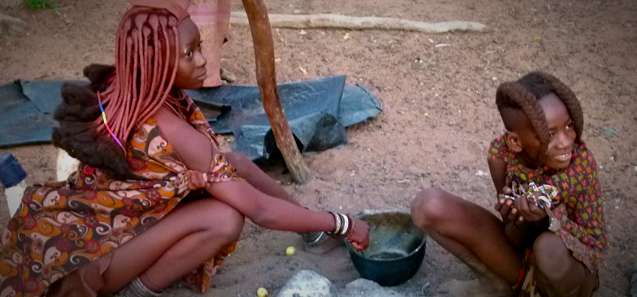
- Himba People – Northern Namibia
OK now you know basically where you want to go…how do you refine it..??
First and foremost in our minds when choosing a destination is the time of year and the weather. There is no point in turning up to Nepal in December expecting to hike in the mountains or New Zealand in December to ski. A big wet season anywhere can make travel unpleasant, dangerous or downright impossible.We normally try and avoid peak seasons anywhere because it is less crowded, cheaper and quite often the weather is milder. Some of you, however, will be restricted by your own holidays or those of your families. All the planning in the world cannot guarantee you will have ideal circumstances to do and see everything you want to but a little planning can give you a better chance or prepare you for adverse conditions if they occur.
The other thing you need to think about is how long do you have? The less time you have, the better you have to plan how to get to those things you simply don’t want to miss. More time gives you the flexibility to branch out and do different things you find out about on the road, rest a little if you get sick or just weary, and take advantage of cheaper transport and accommodation deals because you have options. You might decide you simply cannot do everything you want this time around and slow your pace down to do a few things well and build a case for coming back.
Of course there is your budget, and this will feature heavily in part two of choosing how to do things. You can spend every bit as much in Asia as you would in Europe or the USA if you want to but you can also spend very little. There are some basics though…You cannot legally visit Bhutan for anything less than $200 off-season, $250 in peak months. It is the law. If your budget is $50/day then either start saving or choose another destination
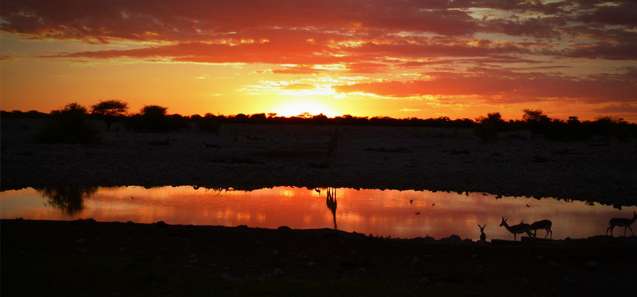
- Sunset at the Water hole – Etosha, Namibia
Number 1. Lonely Planet Guides and website. We have tried other guides in the past and keep going back to these. We have probably bought at least 50 of them over the years. We have also bought digital chapters and used them on the Kindle but prefer to have the books for ease of use, especially cross-referencing routes. HOWEVER….we do not expect everything in there to be GOSPEL. Think about the logistics…..Just to get a book like the one of the Travel Guides to press must take quite a bit of time. Things change rapidly in many places. The GFC (great financial crisis) has meant a lot of places have gone bust. Accommodation options, transport routes and food outlets change at a rapid rate. We use them as a broad planning tool and suppliment with local information on the ground and online. Nothing beats chatting to another traveller who has just been where you want to go. The Lonely Planet Thorntree forum is a great place to go on-line for up-to-date info especially where there’s changes in security or major weather upheavals.
Number 2. Destination Tourist sites. Most countries will have some kind of site online that will tell you all about the things to do and see. You get quite good at judging what are MUST sees and what is optimistic “SPIN”.
Number 3. Other travel sites such as Tripadvisor, Way beyond Borders, or just Google “best travel sites” and you’ll come up with any number of lists. There can be such a thing as too much information so choose a few that seem targeted to your area of interest and style of travel and stick with them. (Much the same we have with Lonely Planet)
Number 4.. All those lovely brochures you got from the travel show, travel agent or friends and family.
OK….So you know where you want to go and what you want to see…..now for the next step. How are you going to get there and who (friends/partner or organisation) are you going to go with???? Part 2 – Coming Soon
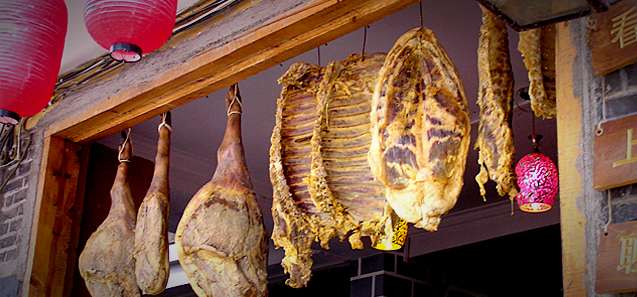
- Butchers shop – China
Note: I do not receive any payment for this post (or any others on the site for that matter!). I do receive a small amount of money by allowing advertisements on the site and any purchases made through those links.

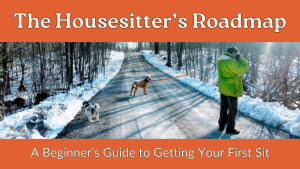



Planning is one of my favourite parts of the trip. So many options to investigate. The big problem (if you call it that!!!) is our trips just keep getting longer and longer 🙂